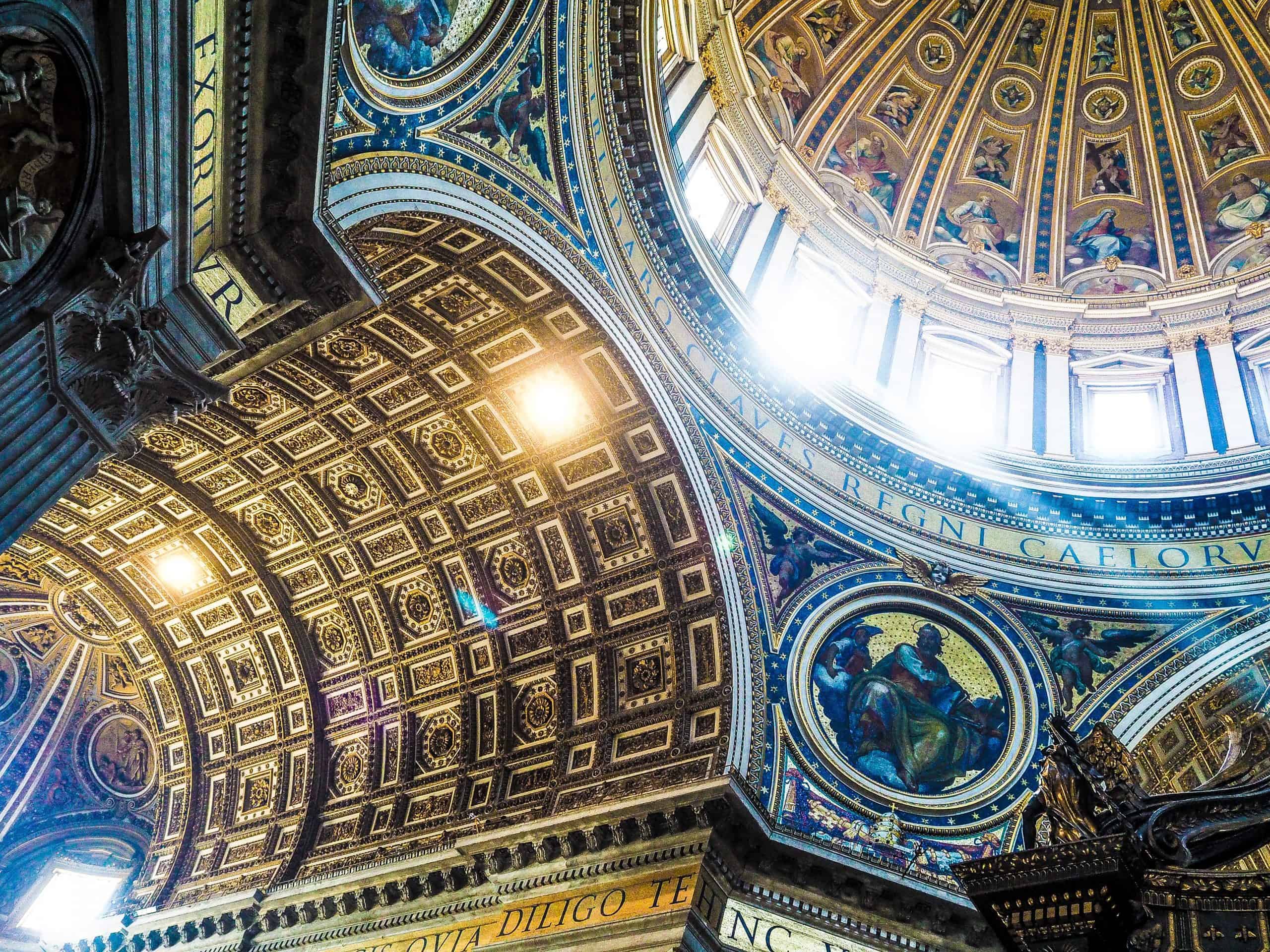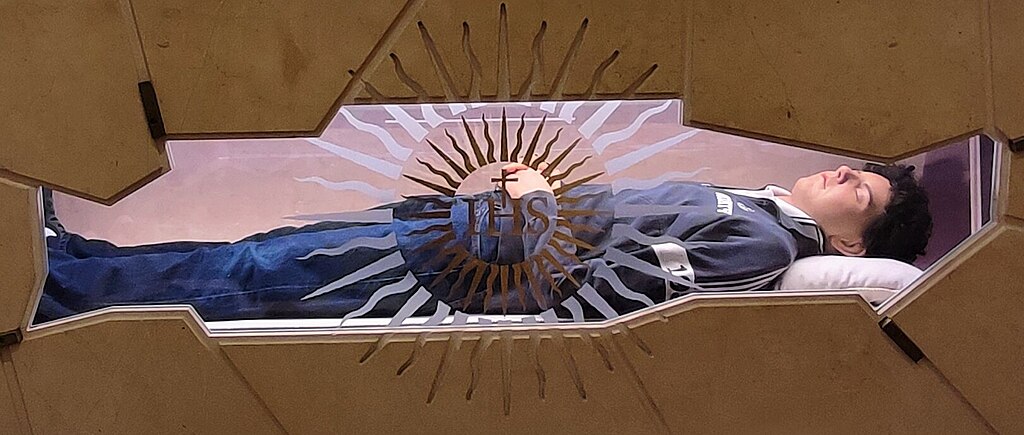Pilgrimages have been happening for millennia, across different faiths and destinations all over the globe. And yet, it’s not likely an everyday topic of conversation, and the practice of pilgrimage has changed dramatically over the years. If you’re wondering what a modern-day Catholic pilgrimage is and how it’s changed from its ancient roots, this is a perfect place to start.
Popular Misconceptions
Let’s start with what a pilgrimage is not. Here are some of the questions we most frequently get asked by those unfamiliar with the practice of pilgrimage.
Don’t I have to be super Catholic to go on one?
Often, people think of pilgrimage as the culmination of religious devotion, reserved only for the spiritual elite. As a Catholic pilgrimage company, we hear this all the time. But from our experience, you don’t have to attend Mass every day or feel particularly pious to make a journey to a sacred destination. Openness to God’s work and a willingness to travel is all you need.
Is this going to be too serious?
It’s easy to think of these trips as solemn, overly ritualistic, or too “holy” to be any fun. But our experience is that a pilgrimage, especially one with Verso, is a journey that is just like life — at times fun, serious, full of wonder, meaningful, and lighthearted. It has a spiritual purpose, but embraces life and a variety of travel experiences along the way. And when you go with a group, it can build meaningful relationships at the same time.
Does a pilgrimage just mean a trip to the Holy Land?
The Holy Land is certainly one of the most significant pilgrimage destinations for Christians, but far from the only one! Other major pilgrimage destinations include Rome, the Camino, Lourdes, and Fátima. When you consider you can take a pilgrimage to any Catholic site, there are thousands of places to make a special journey to. In fact, you can even go on a pilgrimage in your own city or home.
So What IS a Pilgrimage?
Simply put, a pilgrimage is a spiritual journey.
It can be made anywhere, by anyone, for just about any spiritual purpose. For Catholics, it means traveling to a destination — whether it’s a holy site, outdoor space, or even near to home — to experience God in a unique way.
The goal is always transformation. Anyone can travel to a location, but the pilgrim seeks to encounter something deeper. In that way, a pilgrimage is never truly finished, because hopefully you will come back changed, unable to return to old ways of living or thinking.
It’s also more intentional. A pilgrimage is far more than an itinerary which includes cathedrals and Christian historical sites. It’s an intentional encounter with the story of God’s work in the world. Pilgrims are there to pray, celebrate Mass, and reflect on the significance of these places — to fully enter these sacred places with their hearts, minds, and souls.
Pope Benedict, in an address given at the Cathedral of Santiago de Compostela in 2010, gave this summary of Catholic pilgrimage:
“To go on pilgrimage is not simply to visit a place to admire its treasures of nature, art or history. To go on pilgrimage really means to step out of ourselves in order to encounter God where he has revealed himself, where his grace has shone with particular splendor and produced rich fruits of conversion and holiness among those who believe.
Above all, Christians go on pilgrimage to the Holy Land, to the places associated with the Lord’s passion, death and resurrection. They go to Rome, the city of the martyrdom of Peter and Paul, and also to Compostela, which, associated with the memory of Saint James, has welcomed pilgrims from throughout the world who desire to strengthen their spirit with the Apostle’s witness of faith and love.”
Pilgrimages Past to Present
As long as there have been humans, there have been pilgrimages.
Never content to stay in one place, people have left their homes and homelands in search of new horizons and encounters with the infinite. And along the way they have built shrines and places of worship to celebrate their faith and guide the way for other pilgrims.
We can look no further than Abraham in the Old Testament for one of the very first pilgrimages ever taken. Abraham was called by God to leave his country, his family, and his father’s house and travel to the Promised Land, a place where he would be a foreigner, yet would be the land of his descendants as promised. He did so in faith, calling himself a “stranger and a settler.”
In fact, the Old Testament is full of pilgrimage stories. Tales of exodus, of wandering in the wilderness, of walking in faith and discovering new faith.
The Pilgrimage of God
Of course, the ultimate pilgrimage was taken by Christ himself. By coming down to Earth and walking in the flesh with his people, he joined the physical and spiritual journey of humanity. He traveled far and wide with his disciples to bring the message of the Gospel. Then, by his death, resurrection, and ascension into heaven, he completed his earthly pilgrimage, calling us to walk in the “way” of the Lord, as he walks with us.
It was after Christ’s death and resurrection that the type of pilgrimage we know of today started to become established. Ever since Jesus walked this earth, pilgrims have been traveling to the Holy Land to celebrate the person and journey of Christ.
To the Holy Land and Beyond
Catholic pilgrimages really started to take off in the 4th century, following Constantine’s legalization of the Christianity, which gave people a new ability to travel throughout Europe. Around the same time, church fathers like Saint Jerome encouraged pilgrimages to the Holy Land and others, such as St. Helena helped establish the practice.
One of the reasons the word “pilgrimage” may sound like an old, medieval word is because it was during the Middle Ages when pilgrimages had a massive surge in popularity. Remember the medieval classic Canterbury Tales? The entire story is based around pilgrims going to venerate the shrine of Saint Thomas a Becket in Canterbury.
These medieval pilgrimages looked far different than they do today. They could take months or even years to complete, were physically demanding, and required people to save up money to be able to travel for such a long time. There was also a stronger focus on sacrifice and suffering. Pilgrims were encouraged to not give in to distractions of the ways travelers would typically enjoy themselves through sightseeing, food, or other non-religious activities. Sometimes, pilgrimages were even given as penance for especially grave sins.
Rome also became a primary destination for Christians in the Middle Ages. With an abundance of churches, catacombs, and shrines, Rome has been a consistent pilgrimage destination ever since. Pilgrims have traditionally visited a set of seven churches within 24 hours, and it even became mandatory to do so in the 16th century. Rome also contains what is believed to be the stairs Jesus climbed to reach Pontius Pilate to stand trial. The stairs were brought to Rome by St. Helen in the 4th century.
The Camino de Santiago (The Way of St. James) is another pilgrimage site with origins in the Middle Ages that has exploded in popularity. A route which stretches all the way across Northern Spain, the Camino eventually reaches the city of Santiago de Compostela, where the remains of St. James are traditionally believed to be buried. There are many routes pilgrims can take through Spain, but all lead to the shrine of the apostle St. James, one of the original disciples of Jesus. In the Middle Ages, the route included this important monument, but had a more epic ending. Traditionally medieval pilgrims went the Roman route, ending at Cape Finisterre, which means “the end of the world.” By picking up a shell from what they believed was literally the edge of the world as they knew, they would come back with proof that they had made the journey.
Throughout the centuries, pilgrimage destinations have expanded greatly, going well beyond the three main destinations — the Holy Land, Rome, and the Camino de Santiago. Churches, shrines, and Marian apparition sites have appeared in countries and continents all over the world. South America, in particular, has become full of pilgrimage destinations.
Catholic pilgrimage is a centuries-old tradition that has been kept alive to this day. As you decide whether you’ll go on one yourself, you can remember that wherever you go, you continue the journey so many millions of the faithful have taken before.
A Modern Vision of Catholic Pilgrimage
At Verso Ministries, we see today’s pilgrimages as a way to extend the tradition, while breathing new life in the practice at the same time.
The core purpose is still the same — to go on a transformational, spiritual journey to a place that God has uniquely occupied in space and time.
But just as our faith has come to embrace the fullness of the life God has given us, we are embracing the fullness of life to be experienced all over the world.
In the same way that a walk through a park, or dinner with a close friend can be a spiritual moment, travel offers special moments not confined to traditional holy sites. We can encounter God in the many ways he reveals himself to us — through nature, community, the food we eat, incredible art, and history, to name a few.
It’s with that in mind that we know there’s more to explore, as pilgrims, than ever.
Each Verso pilgrimage has a defined spiritual purpose in mind. We go to the Holy Land to discover how near God is to us. We travel to Rome to appreciate the fullness of life God has given us. We walk the Camino to discover God within us.
Along the way we also discover the foods, customs, history, art, and amazing natural spaces of that region. Because you never know what will turn into a spiritual experience, or how God will impact you when you take a step of faith to go on a pilgrimage.
Take A Step Closer
Deciding to go on a Catholic pilgrimage is a big step, we get it! It’s an investment of time, resources, and planning. But the payoff, as we’ve seen over and over, can be life-changing, just as it has for the millions of Catholics who have gone before you.
We encourage you to dig in, learn more, and prayerfully consider what it might mean to go on a spiritual journey of your own. Whether it’s a trek on the Camino, or a visit to Rome, we hope you’ll go and discover a faith that’s more real than ever.
If what you’ve read has made you realize you don’t want to wait another second, take a look at our upcoming departures. We can’t wait for you to experience pilgrimage for yourself!




